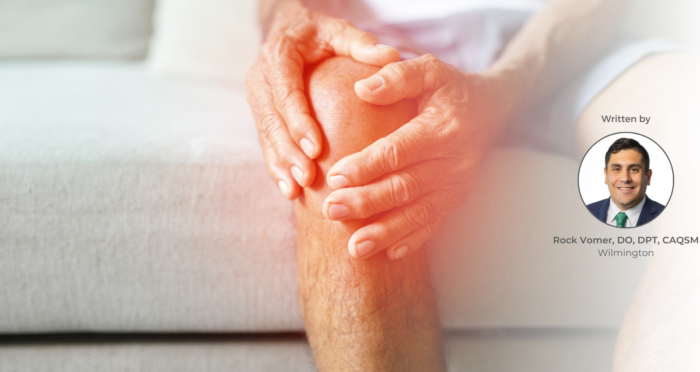Embracing the golden years should be a time of joy, reflection, and continued vitality. However, for many seniors, arthritis can present obstacles to staying active and enjoying life to the fullest. The good news is that with the right strategies and a proactive mindset, it’s possible to overcome these obstacles and maintain an active and fulfilling lifestyle. In this guide, we’ll explore practical tips for staying active in your golden years, even in the face of arthritis challenges.
The Impact of Arthritis on Active Living
Arthritis can pose significant challenges to staying active, affecting mobility, joint flexibility, and overall quality of life. As joints become stiff and painful, activities that were once routine may seem daunting. Understanding the impact of arthritis is the first step toward developing strategies to overcome these obstacles and continue leading an active lifestyle.
Common Obstacles Arthritis Presents:
- Joint Pain and Stiffness: Persistent pain and stiffness in the joints, making movement uncomfortable.
- Reduced Range of Motion: Limited ability to move joints through their full range of motion.
- Fear of Injury: Apprehension about exacerbating joint pain or causing further damage during physical activity.
- Fatigue: Arthritis-related fatigue that may limit endurance and energy levels.
Overcoming Arthritis Obstacles: A Practical Guide
1. Customized Exercise Plans:
Seeking guidance from healthcare professionals, such as physical therapists or rheumatologists, can help create customized exercise plans tailored to individual needs and limitations. These plans consider the specific type of arthritis, its severity, and any other health considerations.
Example Customized Exercises:
- Low-Impact Aerobics: Activities like swimming or stationary cycling to promote cardiovascular health without stressing the joints.
- Joint-Specific Exercises: Targeted exercises to improve the range of motion and flexibility of affected joints.
2. Prioritize Low-Impact Activities:
Choosing low-impact activities is crucial for individuals with arthritis as they provide the benefits of exercise without excessive strain on the joints.
Low-Impact Options:
- Walking: A simple and effective way to stay active without putting too much stress on the joints.
- Swimming: Buoyancy in water reduces impact, making it an ideal choice for individuals with arthritis.
- Yoga: Gentle yoga poses enhance flexibility and promote relaxation.
3. Warm-Up and Cool-Down Routines:
Incorporating warm-up and cool-down routines into exercise regimens is essential to prepare the muscles and joints for activity and reduce the risk of injury.
Example Warm-Up and Cool-Down Exercises:
- Gentle Stretching: Dynamic stretches to warm up the muscles and increase blood flow.
- Joint Circles: Rotating joints to enhance flexibility and reduce stiffness.
4. Listen to Your Body:
Paying attention to your body’s signals is crucial when living with arthritis. If an activity causes pain or discomfort, it’s important to modify or stop the activity.
Self-Check-In:
- Regular Assessments: Periodically assess how your body responds to different activities and adjust accordingly.
- Rest and Recovery: Allow for adequate rest between activities to prevent overexertion.
5. Joint Protection Techniques:
Incorporating joint protection techniques into daily activities can help minimize stress on the joints.
Joint-Friendly Practices:
- Use Assistive Devices: Canes or walkers can provide additional support during walking.
- Proper Ergonomics: Ensure proper body mechanics and ergonomics, especially during household chores or work activities.
6. Engage in Strength Training:
Building and maintaining muscle strength is crucial for supporting joints and improving overall functionality.
Strengthening Exercises:
- Light Weights: Incorporate light resistance exercises for arms and legs.
- Bodyweight Exercises: Squats and lunges to strengthen lower body muscles.
7. Stay Socially Engaged:
Social engagement is a vital aspect of overall well-being. Staying connected with friends, family, or participating in group activities fosters a sense of community.
Socially Active Ideas:
- Joining Clubs or Classes: Participate in activities that align with your interests, such as book clubs or art classes.
- Walking Groups: Form or join a walking group to make physical activity a social endeavor.
8. Pool Exercises for Joint Relief:
Water provides buoyancy and resistance, making pool exercises an excellent option for individuals with arthritis.
Pool Activities:
- Water Aerobics: Low-impact aerobic exercises in the water to improve cardiovascular fitness.
- Swimming: Full-body workout with minimal stress on the joints.
9. Mind-Body Practices:
Mind-body practices like meditation and deep breathing can help manage stress and enhance overall well-being.
Mind-Body Activities:
- Meditation: Mindful meditation to reduce stress and promote relaxation.
- Deep Breathing Exercises: Controlled breathing techniques to calm the nervous system.
10. Explore Adaptive Sports:
Adaptive sports and activities are designed to accommodate individuals with varying abilities, making them inclusive for those with arthritis.
Adaptive Options:
- Adaptive Yoga: Yoga classes tailored to accommodate diverse mobility levels.
- Adaptive Golf: Modified golf equipment and techniques for individuals with joint limitations.
11. Seek Professional Guidance:
Consulting with healthcare professionals, including physical therapists, occupational therapists, or rheumatologists, is crucial for developing a tailored plan that addresses specific arthritis challenges.
Professional Support:
- Assessment and Monitoring: Regular assessments to monitor arthritis progression and adjust treatment plans.
- Education: Healthcare professionals can provide valuable insights into managing arthritis and maintaining an active lifestyle.
12. Embrace Variety in Activities:
Variety is the spice of life, and incorporating a mix of activities keeps things interesting while providing diverse benefits.
Activity Variety:
- Dancing: Low-impact dance classes for cardiovascular fitness and enjoyment.
- Tai Chi: Slow, flowing movements to improve balance and joint flexibility.
Staying active in your golden years is not only possible but essential for maintaining physical and mental well-being. By adopting a holistic approach that includes customized exercise plans, low-impact activities, joint protection techniques, and social engagement, individuals can overcome the obstacles posed by arthritis.
It’s crucial to remember that the key to active living with arthritis lies in embracing a proactive mindset, listening to your body, and seeking professional guidance when needed. With the right strategies and a commitment to staying active, seniors can navigate the challenges of arthritis and enjoy a vibrant and fulfilling lifestyle throughout their golden years.




